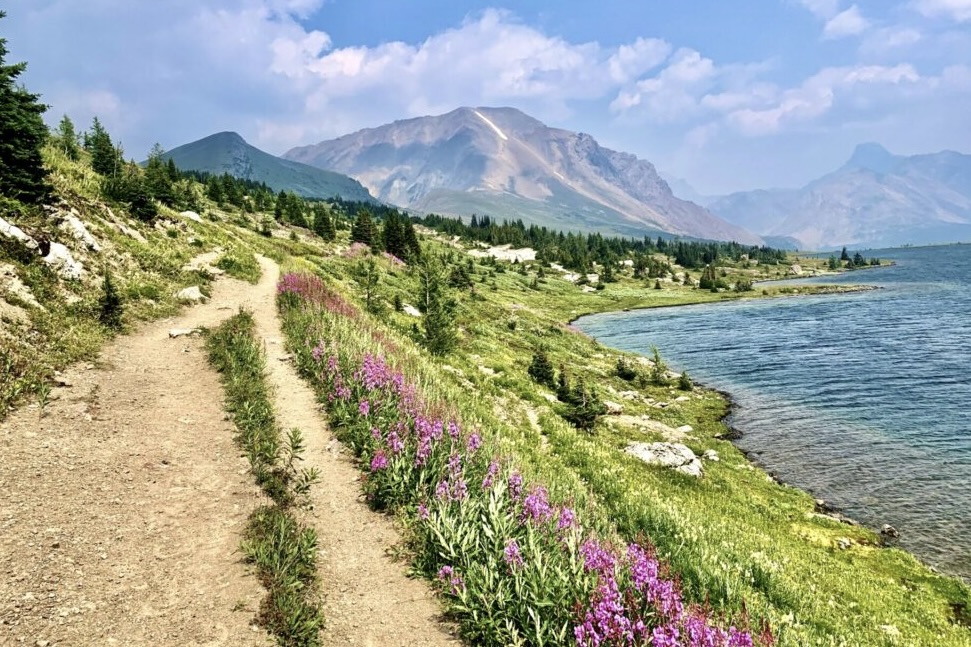
Banff Skoki Loop: 3 Day Banff Backpacking Trail Guide
The Banff Skoki Loop was my first (of many) backpacking trips in Banff National Park. To date this is one of the most visually striking backpacking trips I’ve been on in the Canadian Rockies. The Banff Skoki Loop features vibrant alpine lakes, waterfalls, abundant wildlife, and beautiful meadows and valleys – it’s for sure a top contender for best Banff backpacking trail.
Many of you have heard of Lake Louise, but I’m sure you haven’t heard of its neighbours Merlin Lake, Zigadenus Lake, or Myositis Lake. Lucky for you, the Banff Skoki Loop features these lakes and many more! The Banff Skoki Loop backpacking trail is a great hike for those new to backpacking as the trail is fairly mellow and relatively easy to navigate.
In this post I’ll tell you everything you need to know about the Banff Skoki Loop including campground booking information, highlight areas of the trail, campsite order, packing information, and things to watch out for.
Skip Ahead:
- Canadian Rockies Hiking & Camping Advice
- Favourite backpacking gear
- Banff Skoki Loop Planning – Summarized
- How to get to the Banff Skoki Loop
- Where to stay in Lake Louise
- About the Banff Skoki Loop backpacking trail
- How to book campsites for the Banff Skoki Loop
- Backpacking the Banff Skoki Loop
As you read this post, please consider clicking the links throughout. These are affiliate links which means when you book a hotel or purchase a product, I make a small commission at no additional cost to you (full disclosure). These commissions fund The Holistic Backpacker and help me write more blog posts.
Thank you for supporting my work!
Banff Skoki Hike
Downloadable Banff Map
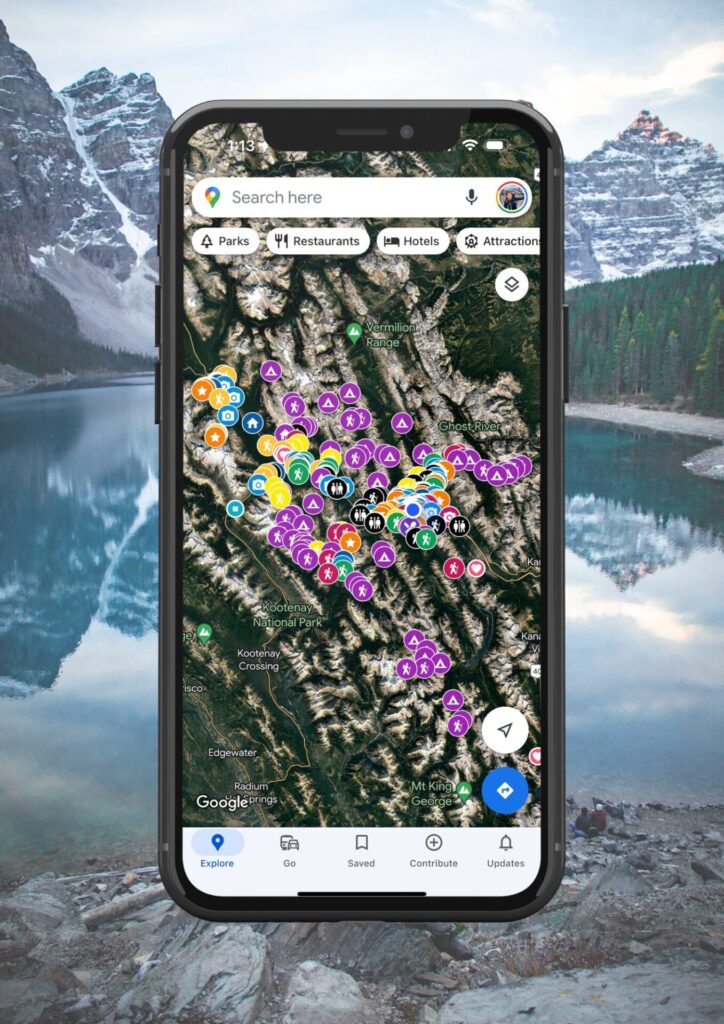
I’ve lived in Banff for years and I’ve now compiled everything I know about the park in this 600+ pin map which I made to help you explore Banff like a local.
The map outlines:
- 100+ hiking trails and backcountry campgrounds
- Every hotel, cabin, and restaurant in the park with ratings, reviews, and booking links
- Unique activities, photo-ops, and blue alpine lakes
- Transit hubs, planning resources, and parking maps
plus plenty of local hidden gems & insider travel tips!
Each pin comes equipped with photos, a description, booking links, and complete guides – designed with the intention of minimizing pre-travel research before your next trip to Banff.
Quick Banff Guide
Parks Pass: You will need a National Park Pass for each day you’re in Banff. Passes can be purchased at the East Parks Gates, the Visitor Centre, any of the campgrounds, or online. If you’ll be in any of Canada’s National Parks for more than 7 days in a 365 day period, an annual Discovery Pass offers a better rate than purchasing individual day passes.
How to get to Banff: fly into Calgary International Airport. From here, rent a car, RV, or take one of the following shuttles to Banff:
- Budget: On-It runs during the summer months and Pop-a-Ride is a ride-share program. You can use my Poparide link to save $5 on your first trip.
- Top private shuttles: Banff Airporter and Brewster.
- Car rental: having access to a car is the best way to travel to/from/within Banff. Here are the best budget car rental options for Canada.
Roam Transit: once you arrive in Banff, use the local transit service as much as possible. There are bus lines within town, plus lines to popular spots like Lake Louise and Johnston Canyon. The bus to Lake Louise should be reserved in advance.
Parking: the best spot to park is the free lot next to the train station. More information about parking in town can be found here and parking fees can be paid here. Bylaw is strict, so ensure you’re following parking rules exactly.
Lodging & Camping: Here’s my guide for hotels in Banff (Organized by Category). If you’re visiting during peak summer (mid June to early September), make your lodging reservations FAR in advance. Front country and backcountry camping reservations must be made on the Parks Canada reservation system. The system typically opens in February and it’s recommended you make reservations then.
Reservations: for activities and restaurants should be made well in advance during summer. Get Your Guide and Viator are popular tour booking platforms whereas OpenTable is used for restaurants.
When to visit: Hiking – July to mid September. Backcountry camping, wildflowers, & water activities – July to August. Fall colours – mid September to early October. Wild ice skating – usually early December. Skiing (best snow), coldest temps & frozen waterfalls – January & February. Northern lights – December to February. Best spring skiing – March to April. Quietest months to visit – April, May, October, and November.
Visiting Moraine Lake or Lake Louise? Read my guide for how to get there with the new road closures. If you want to see Moraine Lake at sunrise, you can book a shuttle here.
Wildlife Safety: 11 ways to stay safe from wildlife, bear safety, & bear basics.
General Canada Travel Tips
Travel Insurance: ALWAYS purchase reliable travel insurance before your trip. This insurance is trusted by backpackers and adventure sport enthusiasts around the world. You can also use my link to receive 5% off SafetyWing policies. Here’s a blog post with more trustworthy travel insurance options you can compare.
Public transit is not common in North America, however every big city has their own local transit system. If you want to venture out of big cities or to any natural spot, plan to rent a car – here are the best budget car rental options in Canada. Trains (Via Rail) are not well connected within the country and are expensive. Hitchhiking is relatively uncommon here, however Poparide is becoming more popular for ride sharing.
Phone: popular providers are Rogers, Telus, and Koodoo. SIM cards can be purchased at the airport, phone stands, or provider storefronts. Canada has some of the most globally expensive phone rates.
Language: English & French (in Quebec).
Currency: Canadian dollars – displayed as “$” or “CAD”. Both cash and card are accepted everywhere.
Visas are typically not needed for stays up to 6 months in Canada.
Tipping culture: You are expected to tip 15-20% minimum on every meal. You are also expected to tip drivers, hair dressers, or anyone providing a “service” to you.
Tax: is not included in the price you see. Each province has their own tax bracket – Alberta 5%, Ontario 13%, British Columbia 12%, etc.
Helpful Banff Blog Posts
- 25+ Epic Lake Louise Hikes
- Step-by-step guide for planning a trip to Banff
- Best Hotels in Banff – Organized by Category
- How to get to Moraine Lake & Lake Louise
- 50+ Things to do in Banff in summer
- 30+ Epic things to do in Banff in winter
- Complete guide to the Icefields Parkway
- How to travel Banff without a car & 50+ Banff hikes accessible via bus
Banff Skoki Loop Hike
Canadian Rockies Hiking Tips
Hiking in the Canadian Rockies is much more advanced than hiking in other regions of Canada and around the world. Here you need to factor in high elevations, extreme weather, potentially dangerous wildlife, and vast wilderness.
Guides for hikes in: Banff | Jasper | Kananaskis | Kootenay | Waterton | Yoho
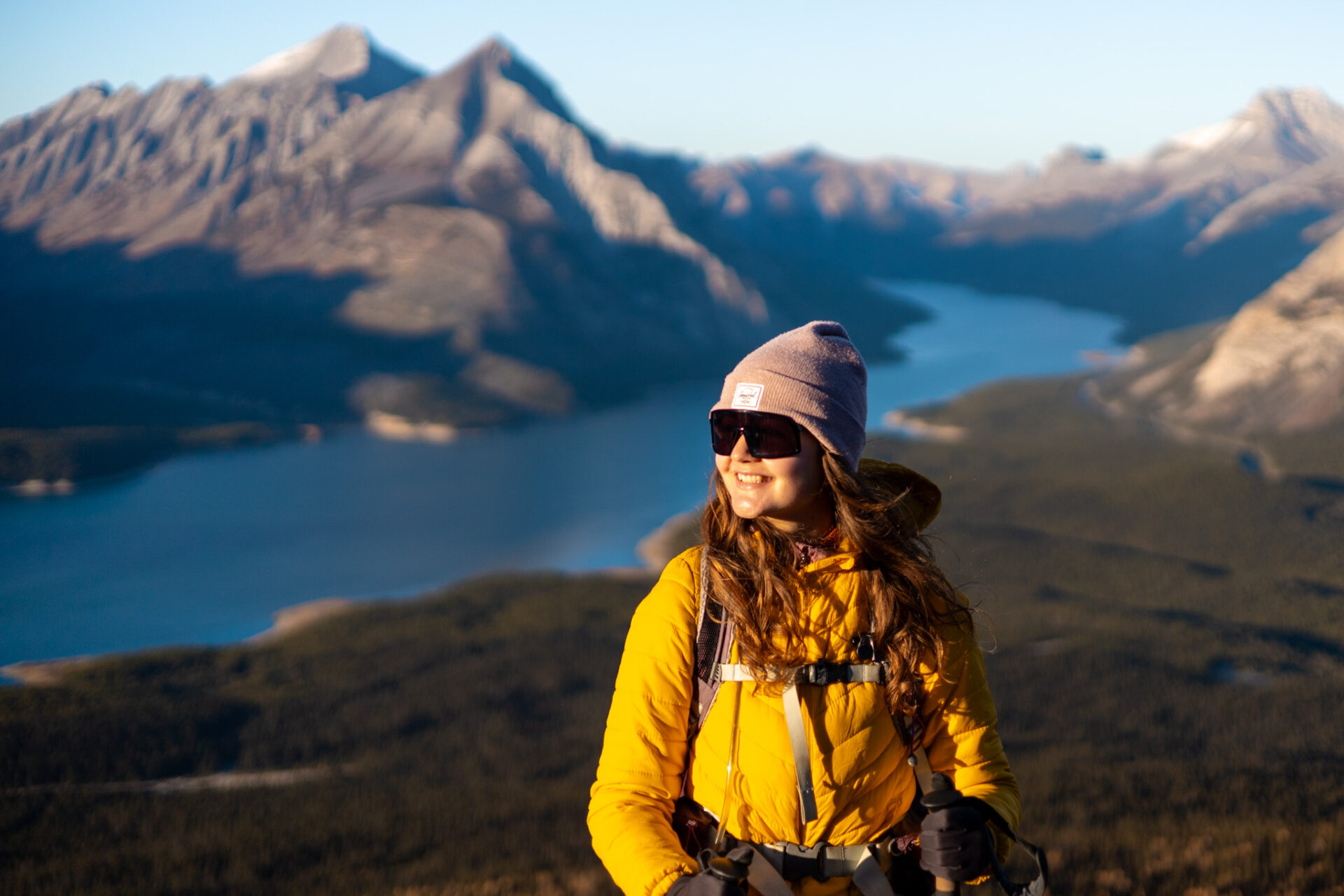
Approach: if you’re new to hiking in the Rockies, take a conservative approach and know it will likely take you longer than you think to complete a trail. Start out with smaller hikes and gradually work your way up when it comes to elevation, exposure, and remoteness. Additionally, ensure you have more than enough daylight to return to the trailhead. Keep in mind you may experience some form of altitude sickness if you’re new to the mountains.
Best Time of Year: you can hike year round in the Rockies however summer (July-early September) is best for any kind of summit hike, Larch season (when the trees turn yellow) generally happens the last week of September to the first week of October, and spring (May-June) is best for lower elevation hikes that do not cross avalanche terrain.
- Hiking in winter? Check the avalanche bulletin, take an avalanche safety course, stick to conservative terrain, hike in groups, and don’t take risks. If you’re unsure, don’t go as the Canadian Rockies can be volatile in the snow. I go off local knowledge and use a combination of the slope angle tool on Caltopo and Google Maps satellite view to survey terrain before hiking.
- My favourite weather tool for the Rockies is SpotWx.
Pets: Generally dogs are allowed on all trails in the Rockies unless otherwise stated. Dogs must remain leashed at all times.
Safety: Always tell someone (or better yet, multiple people) where you’re going and your estimated return time (check-in). Additionally, ensure you tell your safety contacts when you return (check out).
- Carry a satellite communication device as there’s typically no cell service on-trail in the Rockies. The Garmin InReach Mini is a fan favourite, however newer iPhones (14+) have a satellite feature.
What to Bring: always carry more water and snacks than you need. I always have a thin pair of gloves, sunglasses, and sun protection with me too. Blister care, tissues, and a hat are always good to have on hand. Remember, whatever you pack in, you must pack out.
What to Wear: The key is to dress in layers so you can add or take away clothing on a need basis. A combination of wool/synthetic fibres is the best material and you’ll always want to bring an extra layer for warmth (even in summer). You’ll want sturdy footwear (I prefer boots over shoes), and a water/windproof jacket as weather here is unpredictable.
Wildlife: you’ll come across many animals in the Canadian Rockies (elk, moose, deer, etc). The best thing to do is hike in groups of 4+, make noise, give all animals space, and carry bear spray (learn how to use it, too). Here are bear safety tips from Parks Canada.
Maps: I use the Alltrails+ membership which allows users to download their maps and track their location via satellite even when they’re out of service. Alltrails is also currently the best resource to find hikes in the Canadian Rockies.
Canadian Rockies Camping Tips
Camping in the Rockies takes place in two forms – front country and backcountry. Front country camping is in an established campground with amenities like bathrooms, parking, and staff. Backcountry camping is when you hike into your campsite.
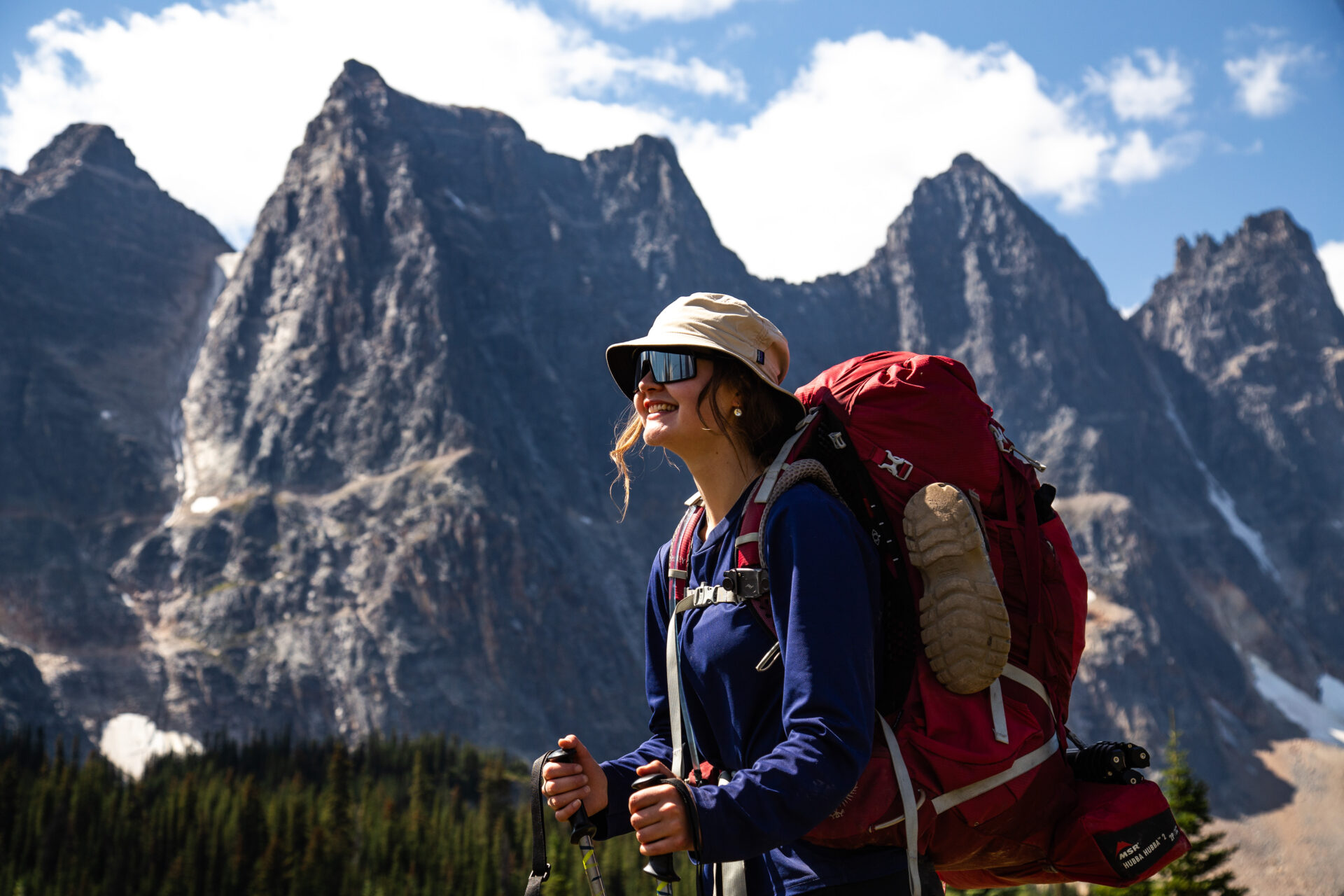
Unless you’re on some form of public land – random camping and free car camping is not permitted in the Canadian Rockies. If you do plan to “free” camp in the designated areas, you must purchase the Public Lands Camping Pass.
Camping Reservations: must be made far in advance, especially for popular sites in the National Parks. Reservation day (when booking goes live) typically occurs in February. Try to book your front country and backcountry reservations then as sites will book out instantly for the entire summer.
- Front + backcountry National Park camping reservations can be made here and Kananaskis reservations can be made here: backcountry | front country.
- Can’t get a reservation? Sign up for cancellation notifications via Schnerp. I use this resource frequently and have found cancellations at even the most popular spots in the Rockies like Lake O’Hara.
When to Camp: Camping can be done year round in some locations, however many campgrounds close for the winter. If you’re hoping to backcountry camp, July-August is the best time of year for warmer and more stable weather. Keep in mind, temperatures are typically very cold at night even during peak summer.
Backcountry Campgrounds: generally have a drop toilet (bring your own TP), picnic tables, tent pads, and bear facilities (lockers or a hanging device). Two items I don’t go backcountry without are dry bags for food storage and Stasher Bags for cooking, garbage, etc.
Hut Camping: the Alpine Club of Canada has established alpine huts scattered around the Rockies and beyond. These huts must be booked in advance and cater to backcountry skiers, hikers, and climbers.
Packing advice and my personal gear recommendations can be found in my Backcountry Gear Guide.
Banff Skoki Hike
Personal Backpacking Gear Recommendations
Here are my favourite backpacking essentials and items I can’t live without in the backcountry.
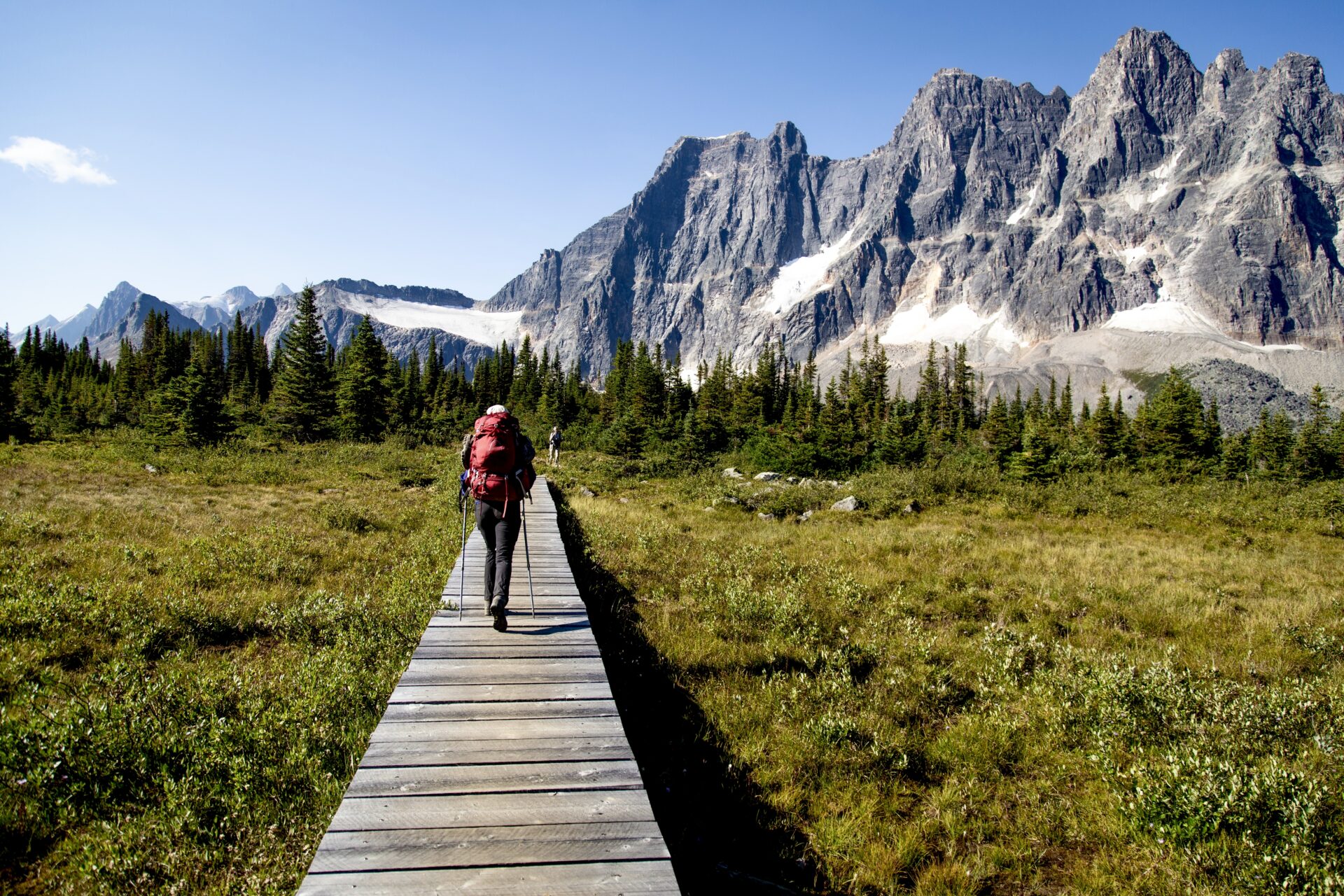
My backcountry gear guide goes into further detail about the below + additional things I bring into the backcountry.
Warmth: as someone with Raynaud’s Disease, one of the trickiest things about backcountry travel is staying warm at night. I wear thick fleece socks and clothes when I sleep in addition to popping Aurora Heat’s reusable fur foot warmers into my socks. For additional warmth you can also fill a Nalgene bottle with boiling water and place it in your sleeping bag overnight. PS – the wide opening Nalgene bottle doubles as an easy way to collect drinking water.
Sleeping: I use the Hotcore winter sleeping bag which has a -20 rating (useful in the Rockies during summer). I also use Hotcore’s fleece sleeping bag liner and the Thermarest NeoAir XLite for my sleeping pad. The MSR Hubba Hubba 2P is my go-to tent.
Cooking: I use the MSR Pocket Rocket Deluxe stove and the RioRand mess kit. I also love Stasher Bags for carrying, rehydrating, and cooking food plus the euroSCRUBBY and slice of this soap for cleanup.
Extras: 3L Hydrapak for water carry and both the Hydrapak attachable filter and aquatabs to clean water. Dry bags for food storage and to keep clothes/electronics dry. I use the women’s Osprey Aura 65L backpack (Osprey Atoms 65L for men). A lightweight camping pillow for comfort and a bug suit if you enjoy keeping your sanity. I also always bring these thin gloves and a toque.
And finally, rain gear. Bring both a rain coat and rain pants as they’re lightweight and make a world of difference if you need an extra layer of warmth or to protect yourself from the elements.
Banff Skoki Hike
Banff Skoki Loop Planning – Summarized
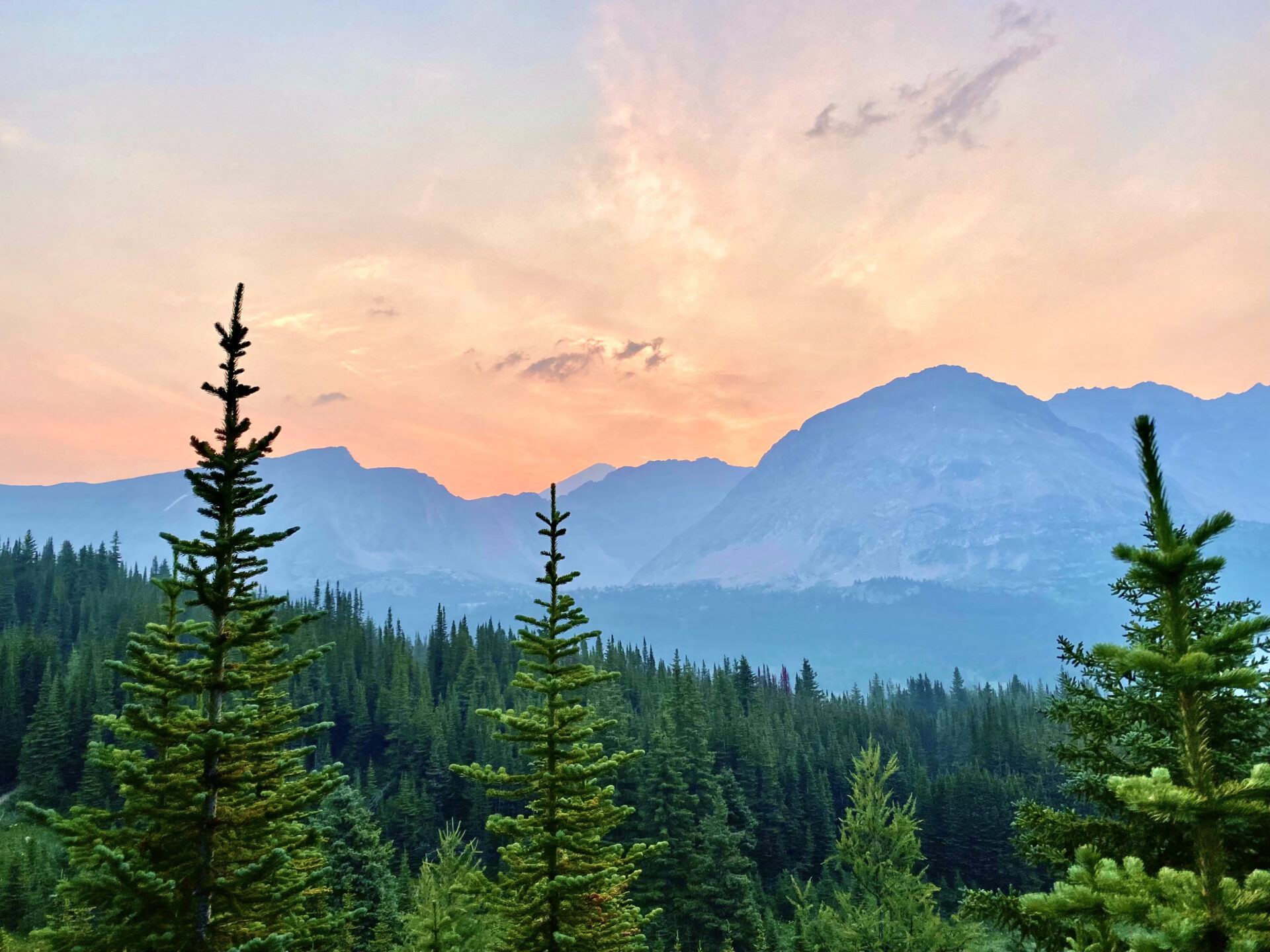
To ensure you have all the information you need, the following is my quick guide to planning a backpacking route along the Banff Skoki Loop. The rest of this blog post will go into more detail about what’s mentioned below.
Trailhead (aka access point): Fish Creek
Best campsite order: Baker Lake (night 1), Merlin Meadows (night 2) or vice versa.
Campsite reservations: can be made via the Parks Canada Reservation Service. Ensure you book these sites early. It’s recommended to book when the reservation system opens (which is typically some time in February).
Can’t get a reservation? If campsites along the Skoki Loop book out, you can sign up for cancellation notifications via Schnerp. I use this platform frequently and have snagged last minute reservations at even the most popular campgrounds like Lake O’Hara.
Alltrails link – I always recommend downloading the Alltrails map for easier navigation. Each year I purchase the Alltrails+ membership which helps me stay connected and navigate while I’m out on the trail. Alternatively, carry the physical Lake Louise map.
Trail stats:
- Distance: 39.5kms
- Elevation Gain: 1,330m
- Type of Trail: loop
- Rated: moderate
- Time: 3 days, 2 nights
Best Time of Year: mid July to the end of August for wildflowers and milder weather. Snow and cold temperatures linger here until late in the season and snowfall can return as early as the end of August.
Helpful Tips: porcupines are present at Baker Lake – ensure all items (including hiking poles & footwear) are stored INSIDE your tent overnight. Bring a bug suit – the mosquitos (especially at Baker Lake) are plentiful. The Banff Skoki Lodge is located close to Merlin Meadows Campground and makes for a “glamping” experience during the summer/ski tour destination in the winter.
Bear Protection: the Banff Skoki Loop is in grizzly country. Carry bear spray in an accessible location and know how to use it in an encounter.
Book a Guided Tour: if you’re new to backpacking and the process seems a bit unnerving, the Skoki Loop is one of the only backpacking trails in Banff with guided tour options. Going with a tour means your guide will take care of the planning and booking process + has all the local knowledge to ensure your trip is a success. You can book a guided tour here which includes your meals and a tent.
How to Get to the Banff Skoki Loop Trailhead
The Banff Skoki Loop trailhead (aka the Fish Creek Trailhead) is located in Lake Louise by the ski resort which is around 2hrs from Calgary (201kms) or 1hr from Golden (85kms). To get here, head East (toward the ski resort) after exiting the Trans Canada Highway. Right before you arrive at the ski resort parking lot, you’ll see a little dirt road off to the right hand side.
This parking lot typically fills up early as this is a popular backpacking route and day hiking area in Banff. I recommend arriving as early as possible to ensure you can find a parking spot.
There are no direct buses to the Fish Creek trailhead, so you’ll have to drive or rent a car – here are the best budget car rental options in Canada. If you’re trying to make it here “backpacker style,” you can take the 8X with Roam Transit from Banff to Lake Louise, then catch the Parks Canada connector shuttle to the ski resort parking lot, then walk approximately 20 minutes to the trailhead. More information about bus routes between Banff-Lake Louise can be found in this post.
Top Tours & Excursions in Banff
Banff Gondola – epic views from the top of Sulphur Mountain.
Banff Hop on Hop off – explore the park at your own pace.
Lake Minnewanka Cruise – take a scenic boat ride down the largest lake in Banff.
Moraine Lake sunrise – chartered bus to see alpenglow on Canada’s most beautiful lake.
Norquay via ferrata – epic beginner friendly climbing route across iron bars on Mt Norquay.
Sunshine Meadows Gondola – find wild alpine flowers and hike around pristine alpine lakes.
Where to Stay in Lake Louise
- Luxury Stays – the Fairmont Chateau Lake Louise is the most iconic hotel in Banff. Staying here gives you direct access to Lake Louise, local hiking trails, and on-site parking. The Moraine Lake Lodge is a hard-to-book, but beautiful cabin stay located directly next to Moraine Lake. Staying here gives you the ability to drive your own car to the lake, meals are included and so are the pricey canoe rentals. Book this hotel as far in advance as possible.
- Mid-range stays – Paradise Lodge & Bungalows is located a mere 500m from Lake Louise, but it comes in at a much lower price point than the Fairmont Chateau. Alternatively, the Lake Louise Inn offers the best value in town.
- Budget stays – HI Lake Louise is the only hostel in town.
- Camp – reservation info.
A popular choice among travellers is to spend the day in Lake Louise, but lodge in Banff. There are more things happening in Banff opposed to Lake Louise such as restaurants, bars, events, etc. Here are my top Banff lodging recommendations:
- Hostels – HI Banff, Banff International, and the Samesun Banff (best location of the hostels and it has a great bar/restaurant).
- Budget stay – Bow View Lodge and Irwin’s Mountain Inn.
- Mid-range stay – Banff Park Lodge, Banff Caribou Lodge & Spa, and the High Country Inn.
- Luxury stay – the Fairmont Banff Springs and the RimRock Resort.
Travellers often also lodge in Canmore during their stay which is 20 minutes from Banff. Lodging in Canmore is often cheaper and more available than lodging in Banff; especially during high season.
About the Banff Skoki Loop
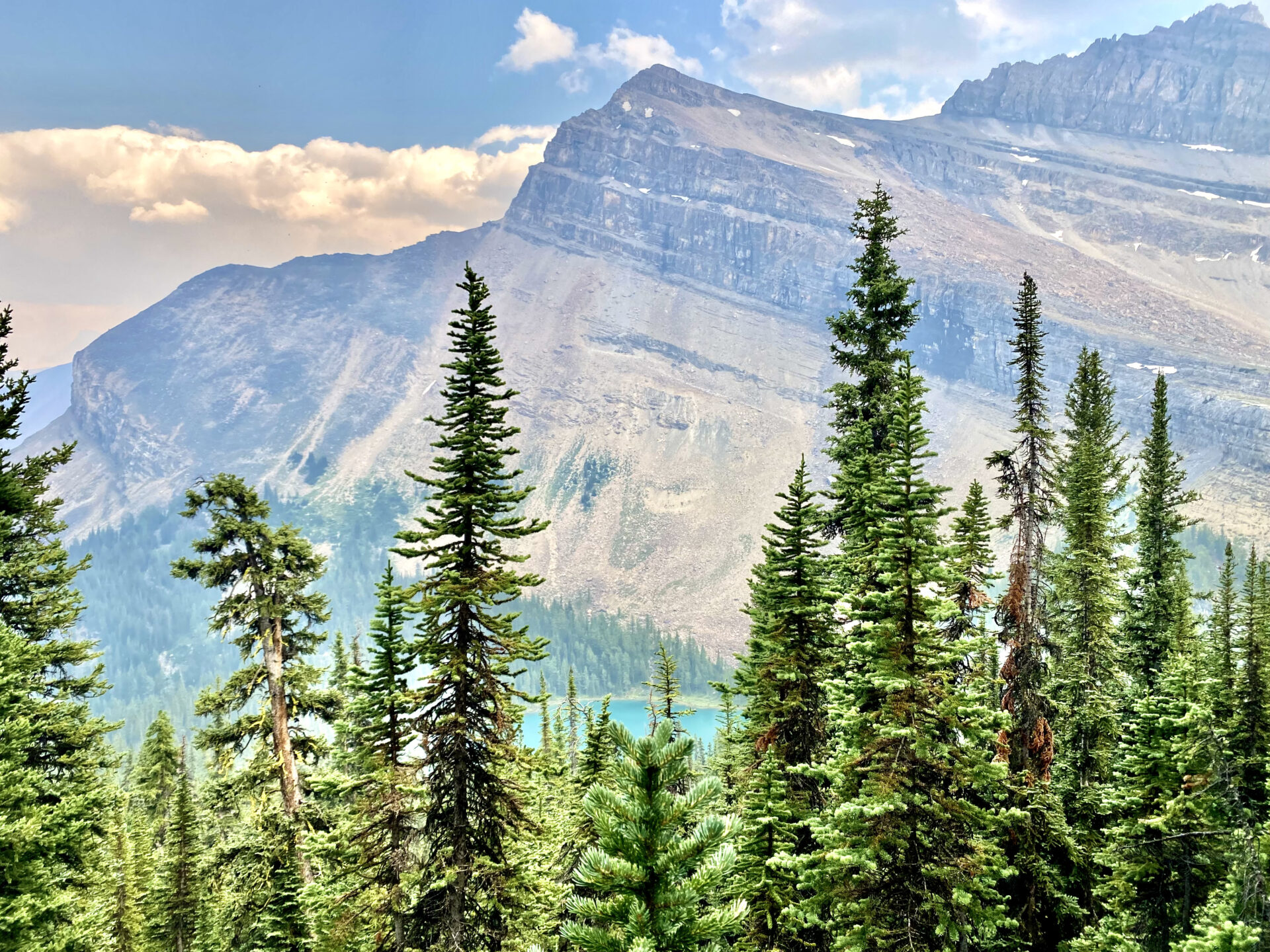
- Distance: 39.9km
- Elevation gain: 1,330m
- Rated: moderate
- Type of trail: loop
- Estimated time: 3 days, 2 nights (13hrs and 15mins of actual hiking time)
- Access point: Fish Creek Trailhead
Physical Lake Louise Area Map (physical version)
The Banff Skoki Loop is a 2-4 day backpacking trail, but it’s usually completed in 3 days, 2 nights. The best time of year to complete the trail is mid July to the end of August as snow and cold temperatures linger here until late in the season. Toward the end of July is also the best time of year to see the many wildflowers in the area.
The Banff Skoki Loop starts out following the Lake Louise Ski Out which makes for a boring start and end to the trail. The Ski Out is around 3.5kms with steady elevation gain throughout, however once you’re through that the trail passes through fields of wildflowers, ventures up a handful of mountain passes, and meanders through forested areas.
The trail itself is relatively easy to follow, however there is one section around Red Deer Lakes which can be fairly difficult to navigate – I talk about this later in the post.
There are ample water sources throughout the loop and you are exposed to the elements for relatively large chunks of time so sun protection and warm layers are recommended. Dogs are permitted on the trail, but they must remain leashed.
Aside from the main trail there are also additional side hikes to spots like Merlin Lake or summit scrambles to Fossil Mountain, Skoki Mountain, etc.
Skoki Loop Guided Tour
For those new to backpacking, consider trying a guided tour. 10 adventures offers a 4 day guided excursion of the Skoki Loop which includes all your meals, your site reservations, and your tent.
How to Book Campsites for the Banff Skoki Loop
In order to backpack the Skoki Loop, you MUST have campsite reservations.

Since the Skoki Loop is one of Banff’s premier backpacking trails, you’ll have to plan your trip in advance. Campsites are booked through the Parks Canada Reservation Service which typically launches in February – if you can, make your summer reservations then to ensure you get the sites you want.
If you don’t want to book online, you can also call the reservation service at 1-877-737-3783 OR 1-519-826-5391 (outside North America).
If you can’t get a reservation, sign up for cancellation notifications via Schnerp. I use this platform frequently and have snagged last minute reservations at even the most popular campgrounds like Lake O’Hara.
To book the campsites, visit this link, filter to the “backcountry” tab, click “backcountry zone,” choose Banff as your park, input “Fish Creek Trailhead” as your access point, then add your party size, tent pads, and dates accordingly.
The ideal campground order is Baker Lake (night 1) and Merlin Meadows (night 2) or vice versa. Aside from these two campgrounds, there are also Red Deer Lakes Campground and Hidden Lake Campground – however I would only utilize these if you’re base camping for lengthy climbing objectives/scramble routes OR if there’s nothing available at Baker and Merlin.
Approximate Campground Distances:
- Fish creek to Baker Lake: 13.9kms
- Baker Lake to Red Deer Lakes: 7kms
- Red Deer Lakes to Merlin Meadows: 5.7kms
- Merlin Meadows to Fish Creek Trailhead: 14kms
The campsites are all equipped with bear poles, tent pads, picnic tables, and outhouses – bring your own toilet paper and a dry bag to hang your food in.
Connect via socials:
Sign up for emails to receive a 25% discount on my travel maps + occasional updates on new hiking guides & travel resources.
Taylor ♡
Backpacking the Banff Skoki Loop
My downloadable Banff & Lake Louise map has every point of interest mentioned below marked with photos and descriptions so you can easily see the layout of the Banff Skoki Loop and plan your trip accordingly.
The Banff Skoki Loop is chock full of amazing views. Along the way you’ll catch yourself staring at the distant mountains, awestruck by the landscape, and gawking at the pristine alpine lakes. The trail does get quite buggy though. So before I tell you all about the Banff Skoki Loop, I’m going to recommend you pack a full body bug suit.
If you’re interested, you can watch my trip on the Skoki Loop here.
Day 1: Fish Creek Trailhead to Baker Lake Campground
The first part of the Banff Skoki Loop is the most gruelling. You’ll be hiking up the Lake Louise ski out which is long, steadily gains elevation, and is unfortunately viewless. If you have the opportunity, hitchhike – you can’t drive up, but there’s the occasional car that drives up for work-purposes.
The most exciting part of the ski out is the pen of horses you’ll cross paths with. Once you make it up the ski out (around 3.4km) you’ll pass through a quick forested section then come out into a beautiful valley filled with wildflowers (hike mid July-ish for the flowers) overlooking Redoubt Mountain, Ptarmigan Peak and Pika Peak.
Once you reach the halfway hut (a tiny log cabin) look for signs that say Hidden Lake, then a second sign pointing toward Baker Lake. If you hike the Banff Skoki Loop in the same direction I did you’ll be heading this way first.
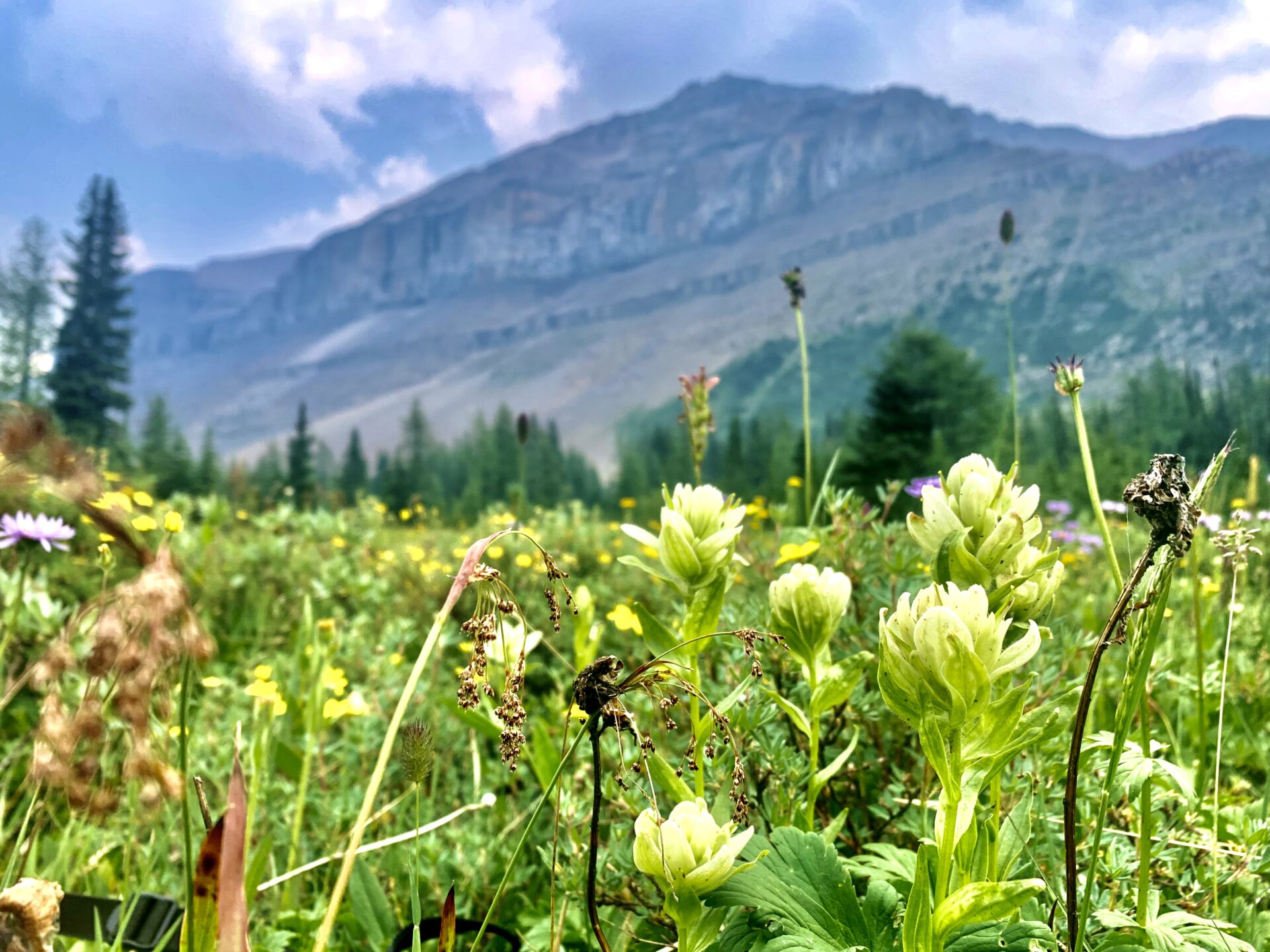
Boulder Pass
The first notable point of interest on the Banff Skoki Loop is Boulder Pass. Boulder Pass begins right after the Halfway Hut and features a massive field of loose rock backed by Redoubt Mountain which has the most striking flat face.
It’s quick and not overly strenuous to the top of Boulder Pass and at the top of the pass you’ll find views of Ptarmigan Lake. Something to note is that once you cross over the pass the temperature seems to drop and it gets very windy. You’ll often find snow over the pass, even late in the season. Ensure you bring warm layers.

Ptarmigan Lake
Just after Boulder Pass you’ll find Ptarmigan Lake which people often complete as a day hike. After Ptarmigan Lake, it’s typically backpackers only.
The path here criss crosses, splits, and seems to go all over the place – however you’ll want to stick to the path closest to the lake as the higher trail leads to Packers Pass. Look for Baker Lake signs and you should reach it in around 4.5kms.
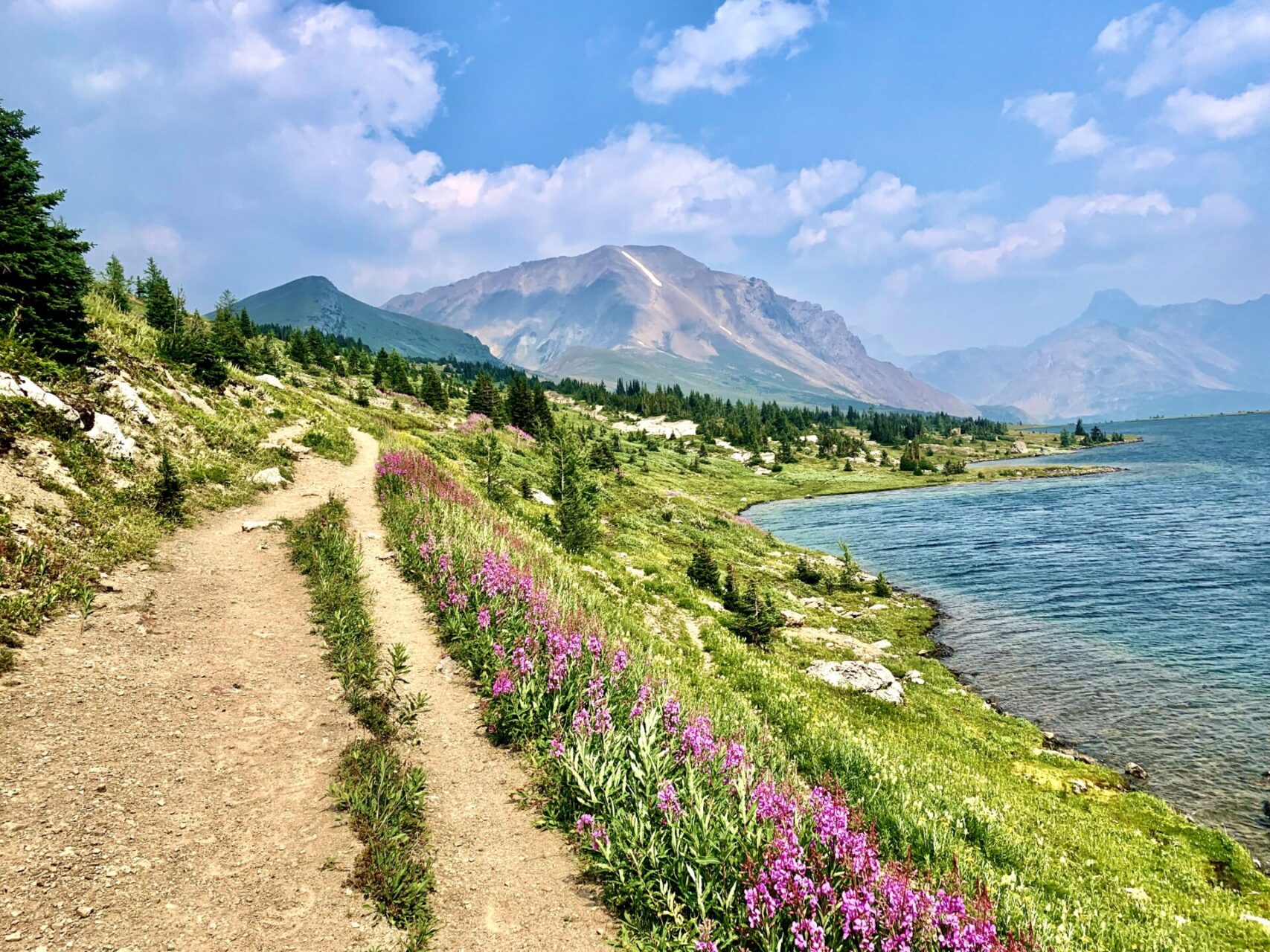
Baker Lake Campground
Baker Lake is easily the prettiest campground on the Skoki trail, however temperatures here are often cold and windy so ensure you have extra layers. This is also a popular spot for porcupines who enjoy munching on hiking poles and footwear. Ensure everything is stored in your tent overnight.
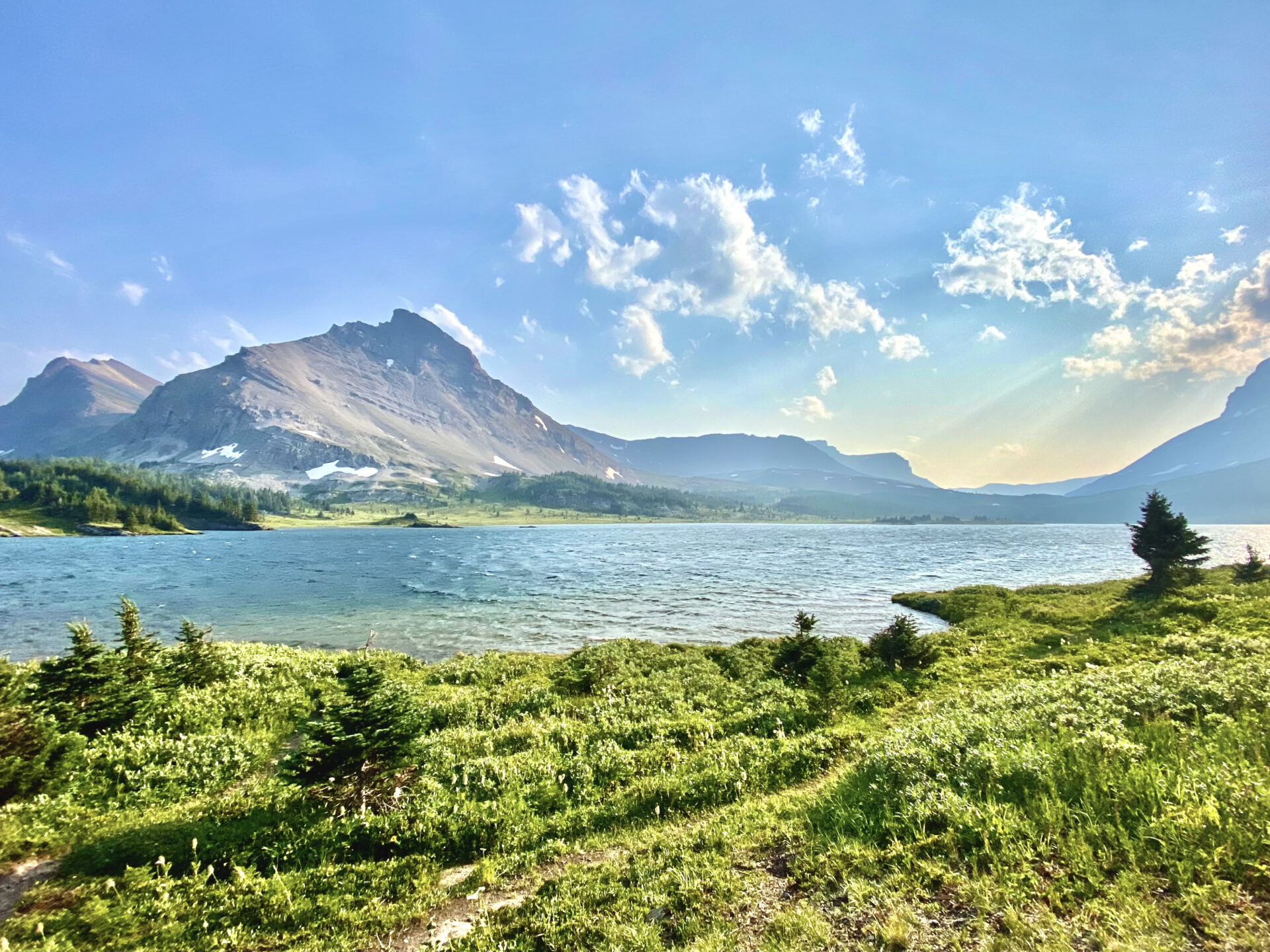
Day 2: Baker Lake Campground to Merlin Meadows Campground
From Baker Lake campground to Merlin Meadows campground you have around 10km of flat terrain – this is by far the easiest day of hiking. You won’t have much shade during this section so make sure you bring sun protection.
On day 2 I experienced some wildfire smoke which disrupted the views, however the Sawback Range is usually visible between Baker Lake-Red Deer Lakes in a wide open valley.

A little more than halfway to Merlin Meadows campground you’ll pass by Red Deer Lakes campground and the trails around here can be a bit confusing. There are various trails and signs directing you to the Skoki Lodge, however unless you’re staying in the lodge, you’re not going this way.
Once you hit the Red Deer Lakes campground, continue West and watch out for small markers here and there. I found having the downloaded Alltrails map during this section was invaluable.
Merlin Meadows Campground
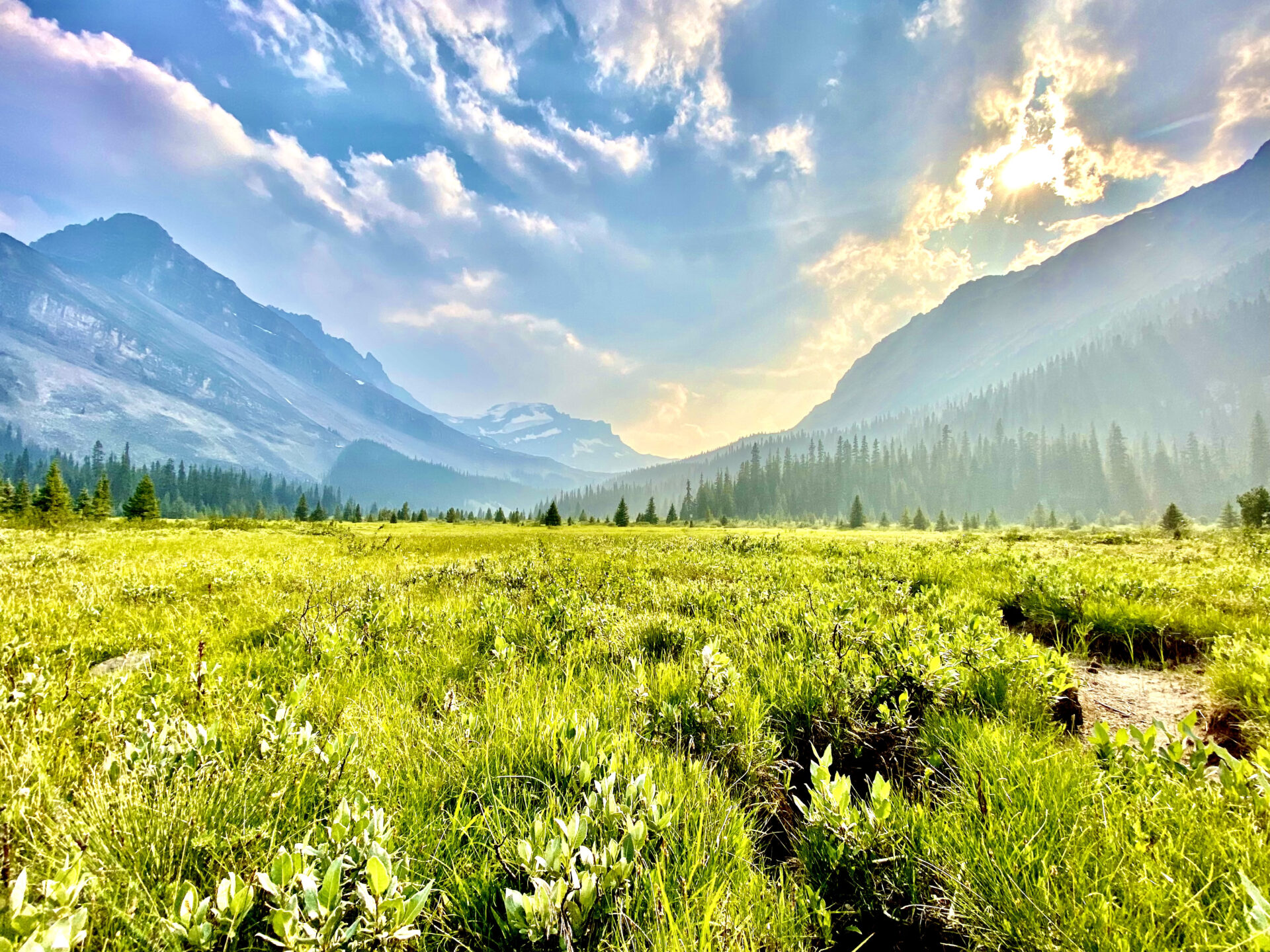
Merlin Meadows is easily the most “magical” meadow I’ve had the pleasure of experiencing. The meadow has beautiful mountain views, wildflowers, and deer prancing around near a flowing stream. The picture above was taken just steps away from the tent pads.
There’s a route up to Merlin Lake from Merlin Meadows Campground which is around 2.5kms one-way with approx. 120m elevation gain. Cross the old rickety “bridge” you would have seen on your way into the campground and follow the lightly treaded path from there.
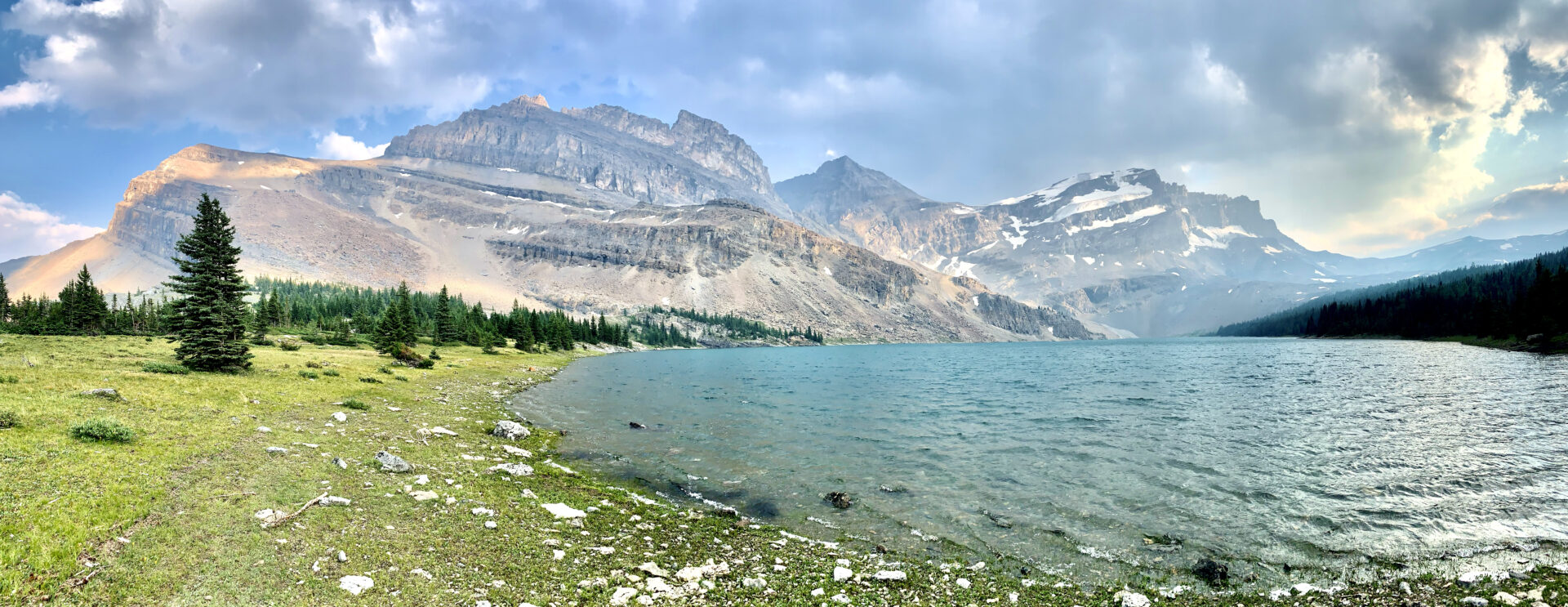

Day 3: Merlin Meadows Campground Back to the Fish Creek Trailhead
Day 3 was my final and longest (around 14kms) day on the Banff Skoki Loop.
Around 1km from Merlin Meadows you’ll pass the Skoki Lodge. My hiking partner and I thought we could buy some tasty baked goods from the Skoki Lodge, but it turns out the food is reserved for lodgers only.
From the lodge you’ll want to walk down toward the creek and keep walking until you find the (literal) fork in the road. Take a left here. You’ll walk through the trees for a short while until you emerge into the mesmerizing Skoki Valley.
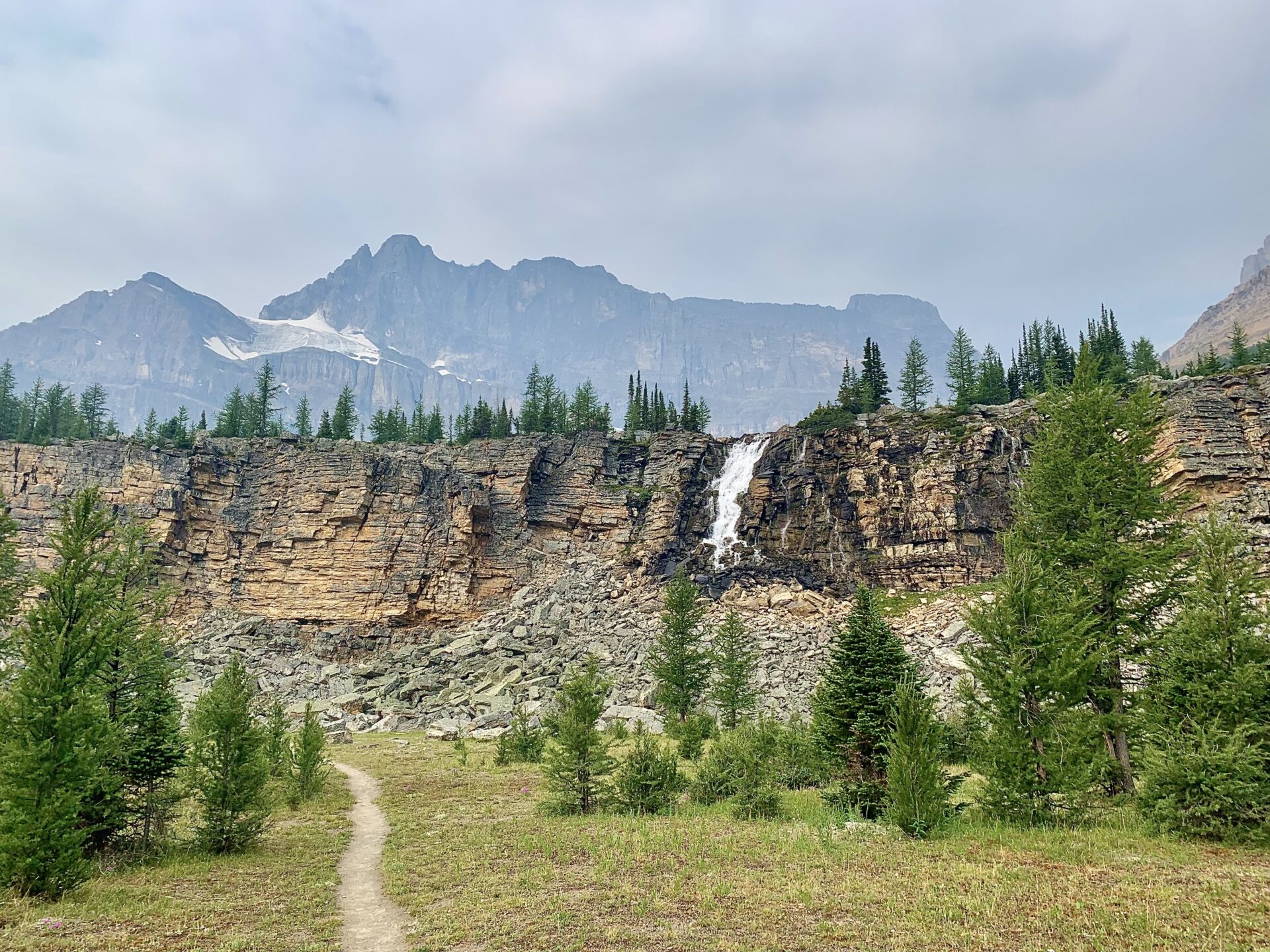
The Skoki Valley is a highlight on the Banff Skoki Loop. Here you’ll walk in between Skoki Mountain and Fossil Mountain to your left and the Wall of Jericho to your right. Early in the season there’ll be a semi-significant river crossing, however later in the season (mid July) it’s a mere tiny stream.
The terrain will switch from packed dirt to loose rock, then you’ll come across the most picture-perfect waterfall. To continue past the waterfall you’ll engage in a brief scramble and actually climb up and through an almost a cave-like section of rock directly next to it.
Lakes, Lakes & More Lakes!
After the waterfall you’ll walk along the shore of both Myositis and Zigadenus Lakes – debatably two of the most stunning lakes I’ve come across in the Rockies.
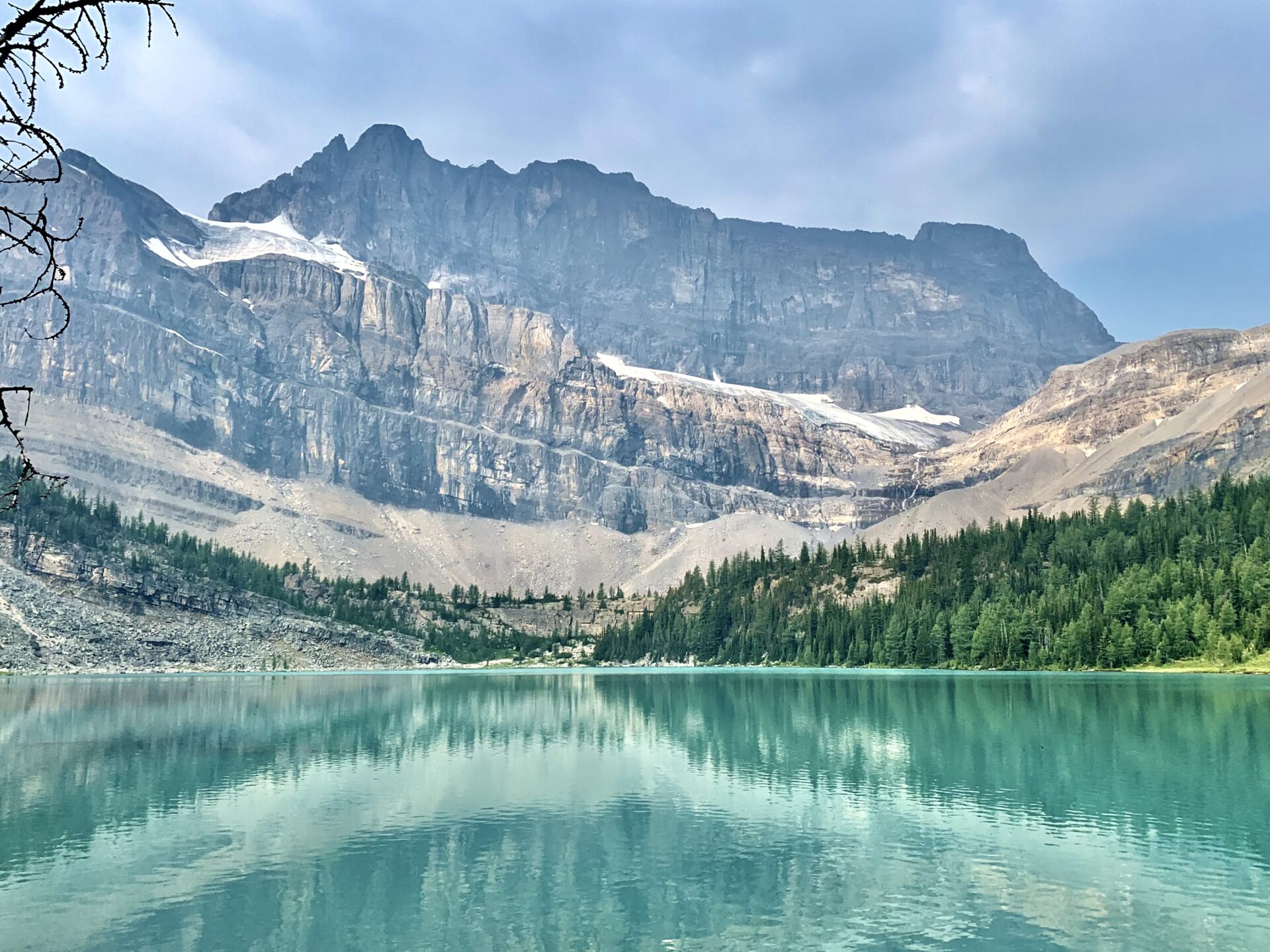
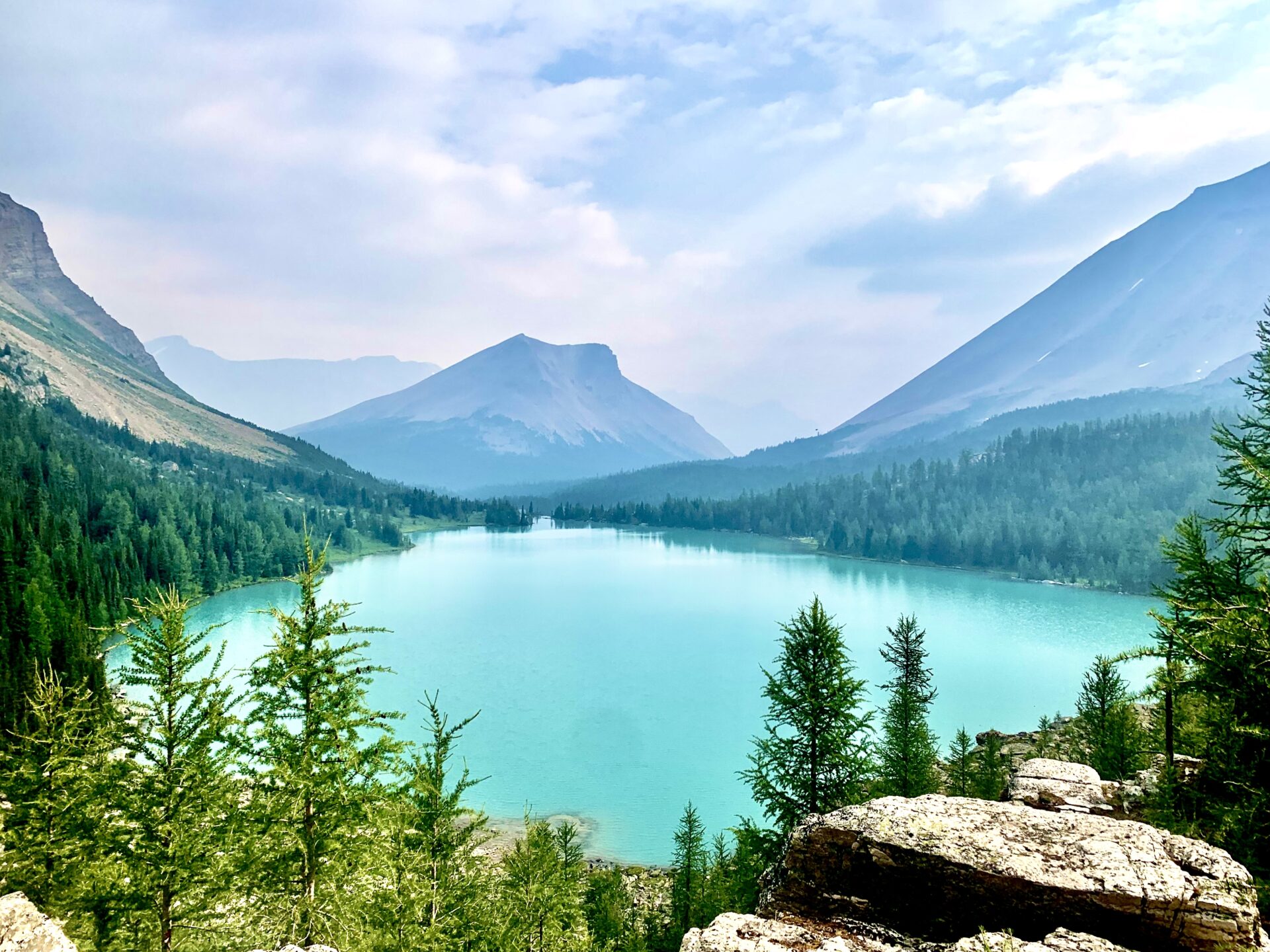

Packers Pass
After a quick rock field and steep uphill grind from Zigadenous Lake, you’ll find yourself on Packers Pass which offers a birds-eye views of Ptarmigan Lake, Redoubt Mountain and Heather Ridge.
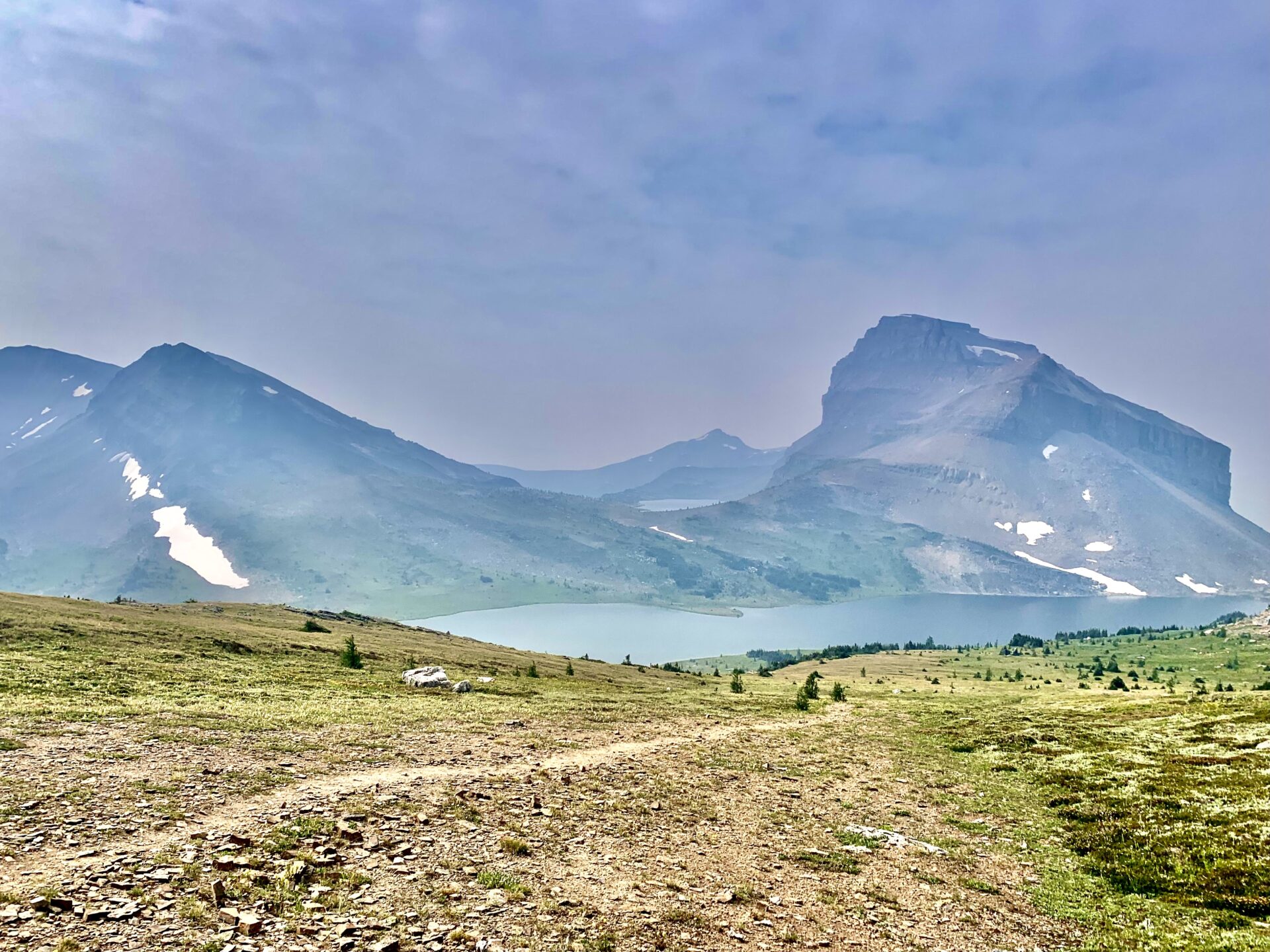
Ptarmigan Lake
From Packers Pass you’ll descend and walk along the shore of Ptarmigan Lake back toward Boulder Pass and the Fish Creek Trailhead. After the pass stick to the wide trail off to the right.
One of the highlights on the way back is that you’ll be able to see the Victoria Glacier which is the famous glacier that sits behind Lake Louise.
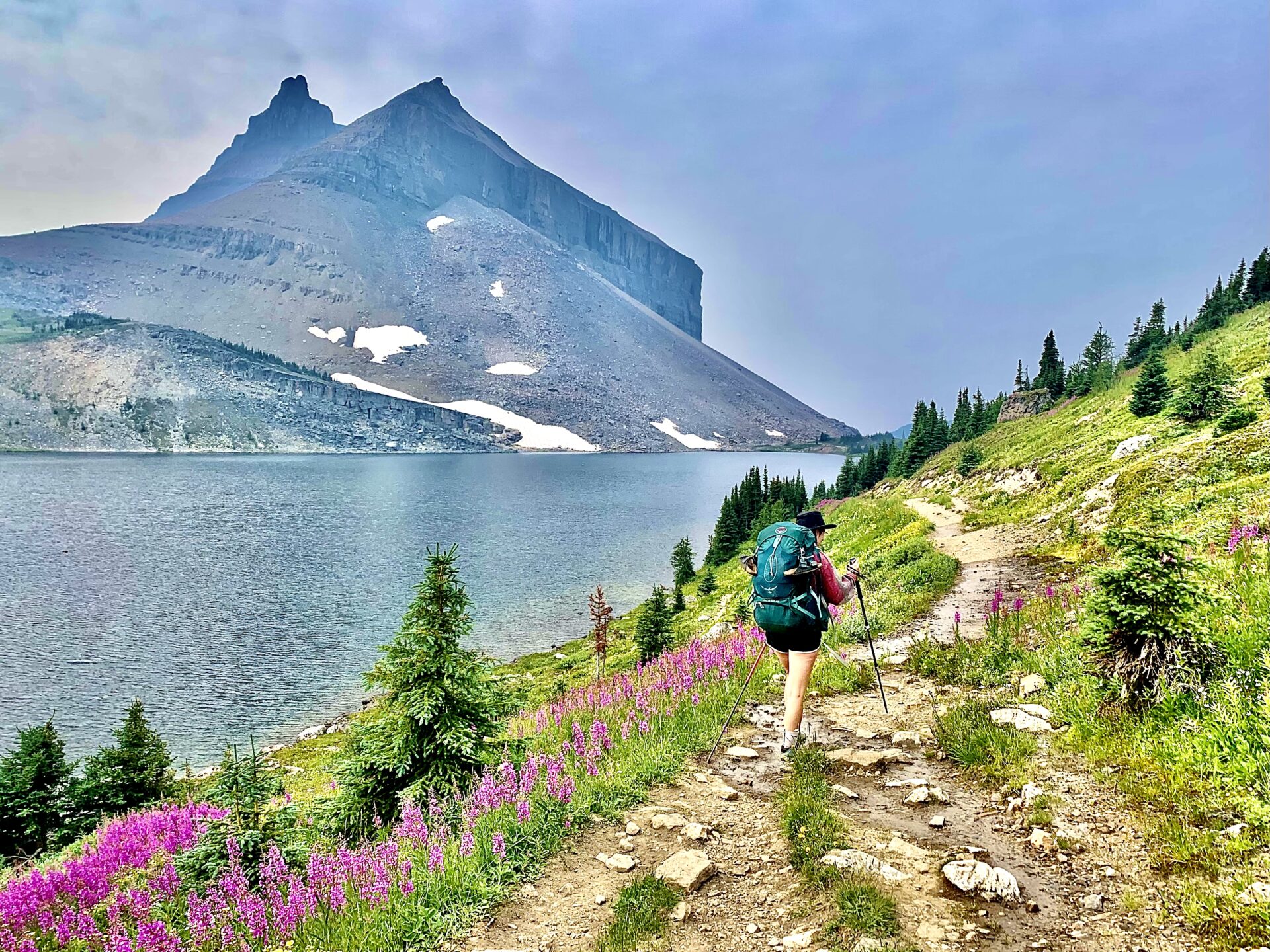
Downloadable Banff Map

I’ve lived in Banff for years and I’ve now compiled everything I know about the park in this 600+ pin map which I made to help you explore Banff like a local.
The map outlines:
- 100+ hiking trails and backcountry campgrounds
- Every hotel, cabin, and restaurant in the park with ratings, reviews, and booking links
- Unique activities, photo-ops, and blue alpine lakes
- Transit hubs, planning resources, and parking maps
plus plenty of local hidden gems & insider travel tips!
Each pin comes equipped with photos, a description, booking links, and complete guides – designed with the intention of minimizing pre-travel research before your next trip to Banff.
More Backpacking Trails
Looking to venture further and see more of the backcountry? Click below to discover more backpacking trails in Canada and beyond.
- Glacier Lake Backpacking Trail – Banff National Park
- Backcountry Gear Guide – What to Pack for Camping in the Canadian Rockies
- A Guide for Hiking the Highland Backpacking Trail in Algonquin
Happy adventuring!
Taylor ♡
Like This Post?
Share with friends or save it for later!
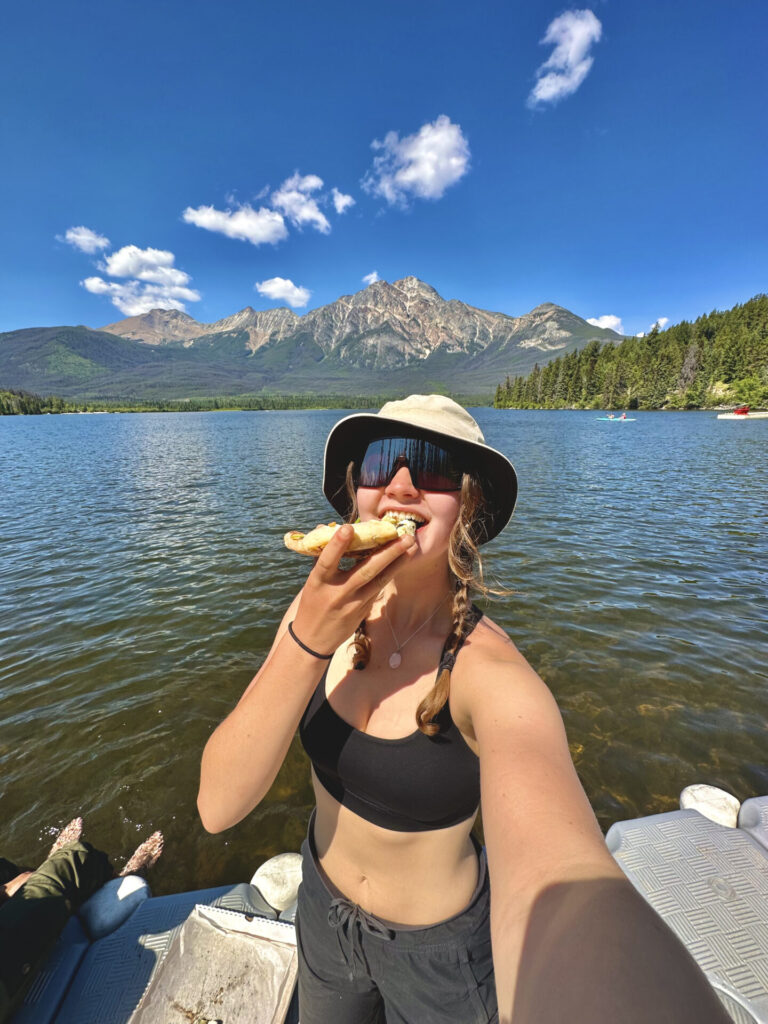
About The Author
HI, I’m Taylor – the voice behind The Holistic Backpacker.
After moving to Banff National Park in 2020 I became an outdoor adventure enthusiast and vowed to never stop exploring.
I now spend my days travelling the world, climbing mountains, and spending nights under the stars in the Canadian Rockies backcountry.
I created The Holistic Backpacker so I could share my adventures and help connect people like you with the same amazing experiences.

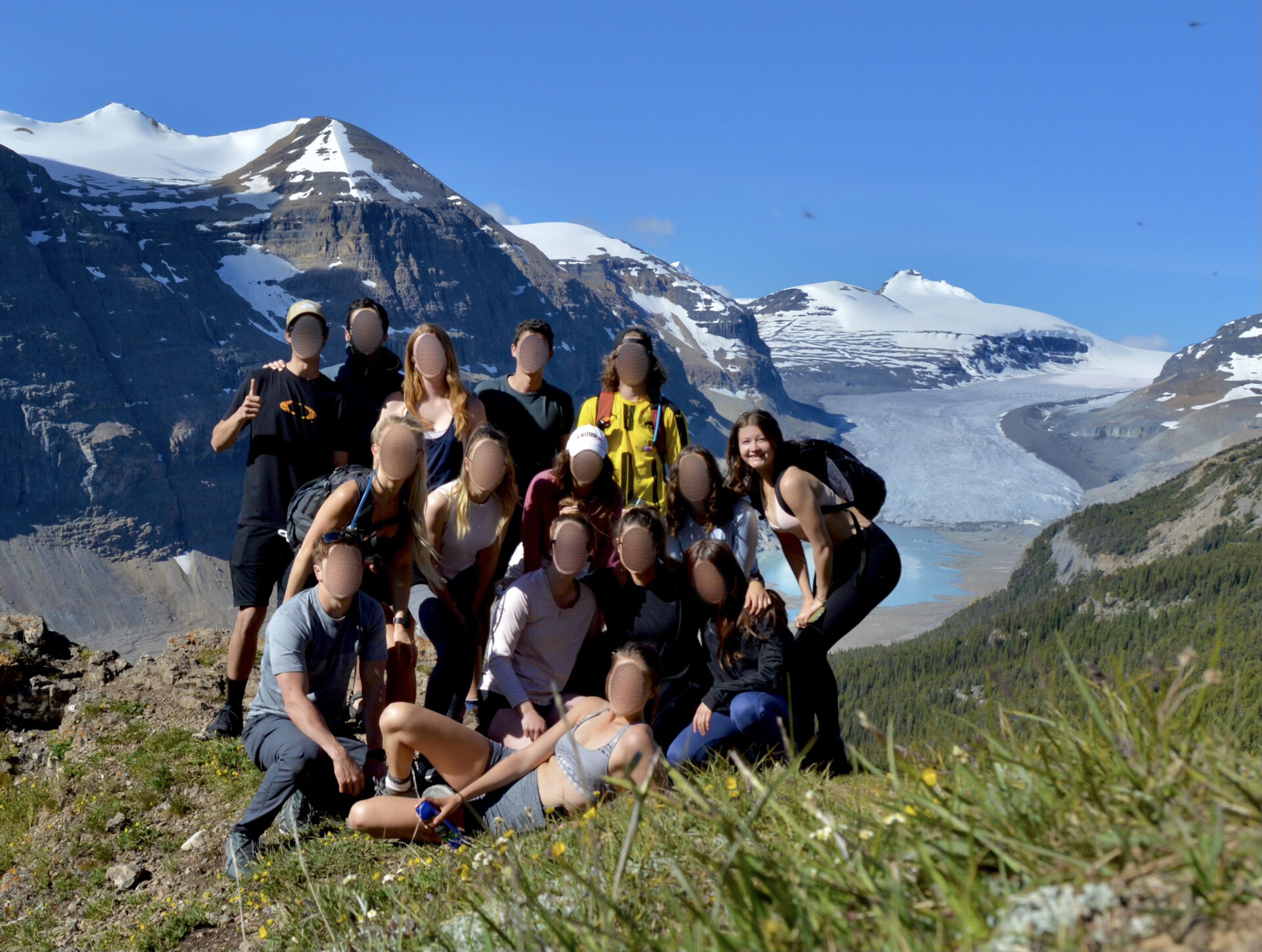
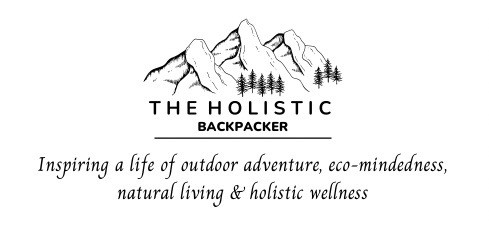
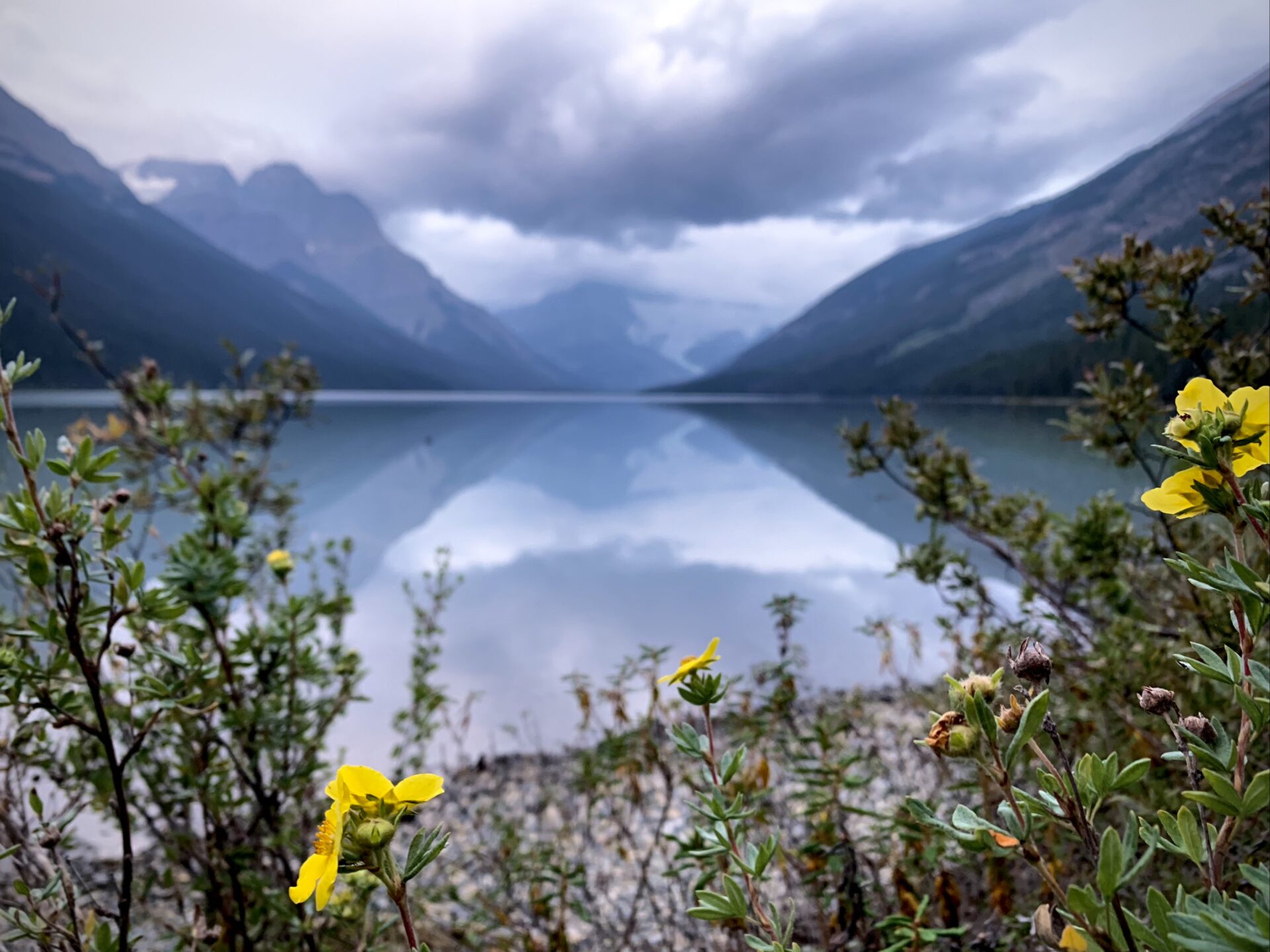

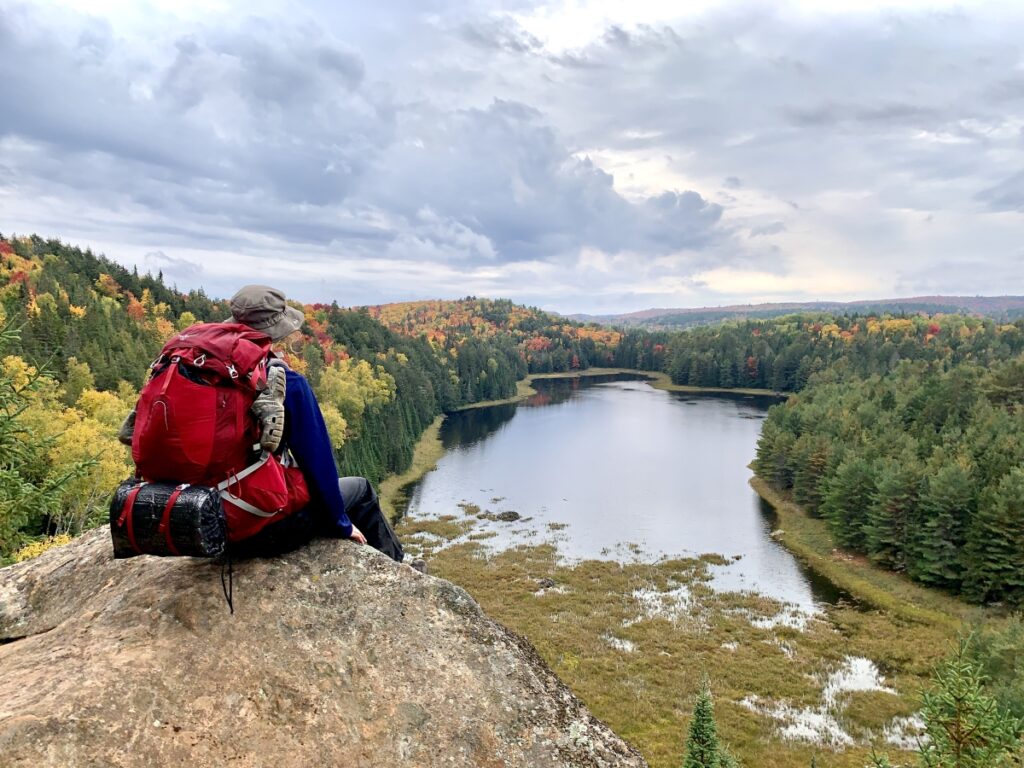
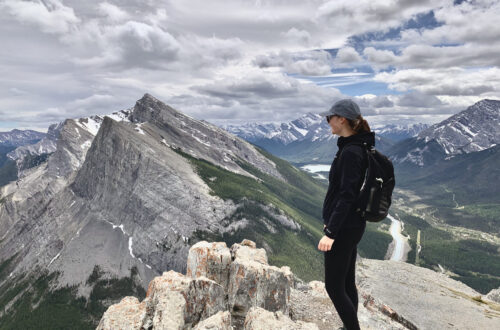
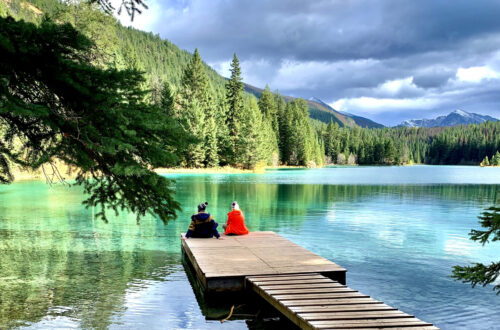
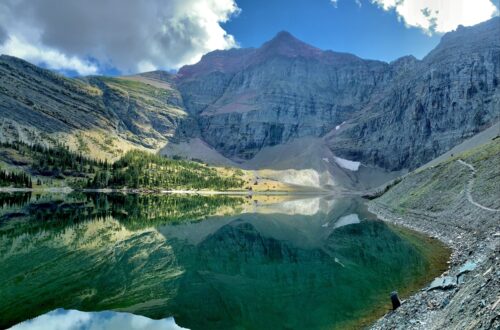
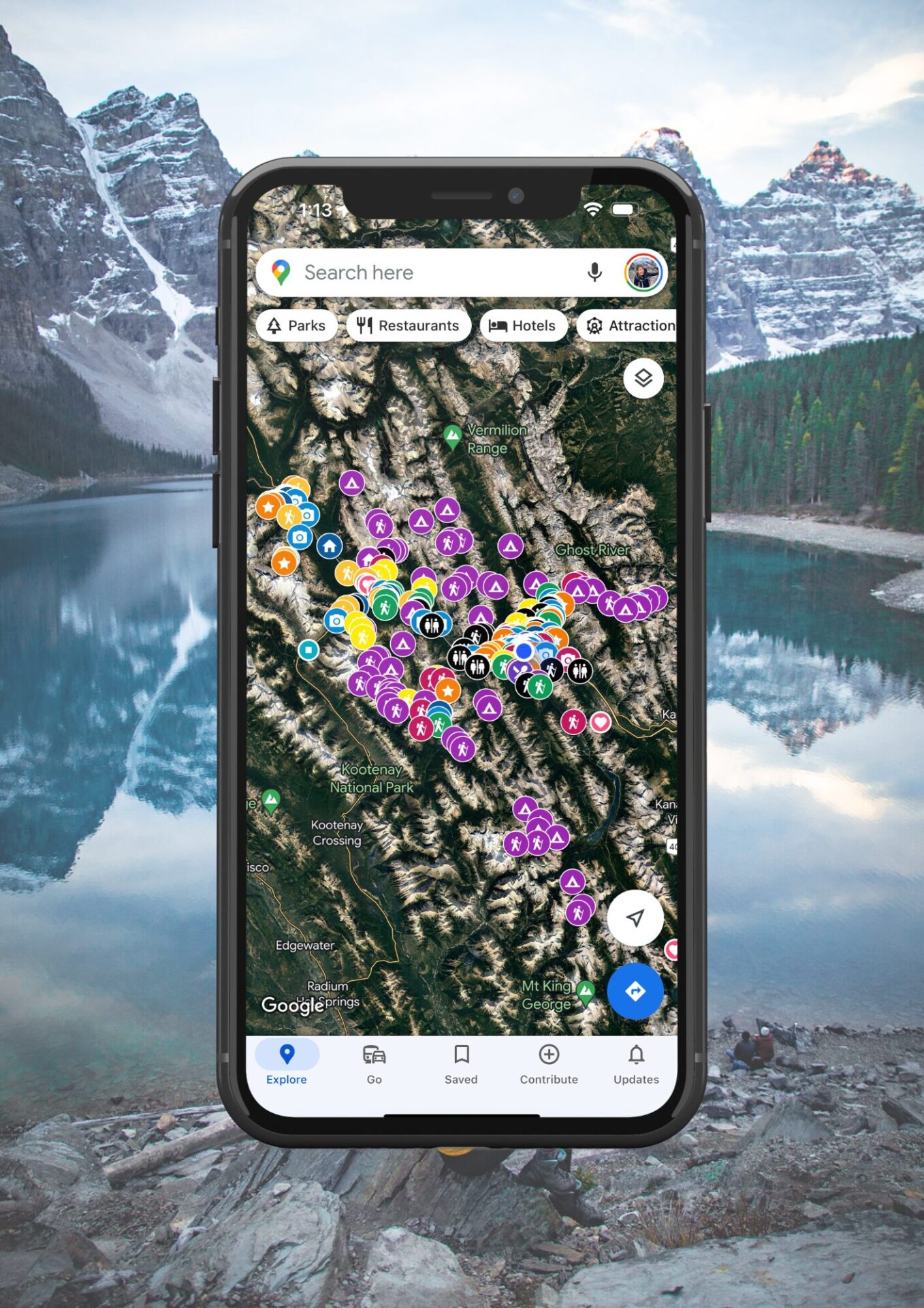
One Comment
Pingback: